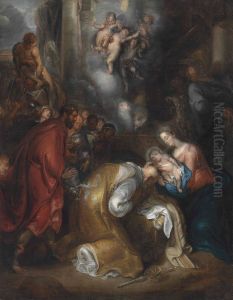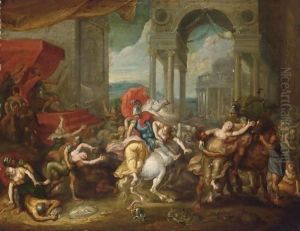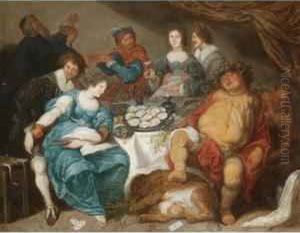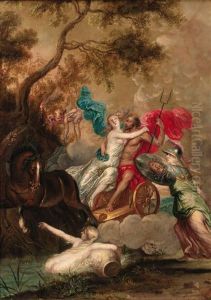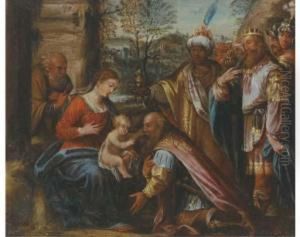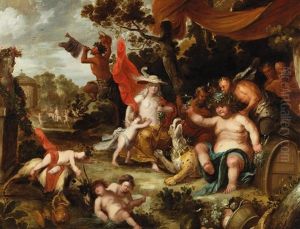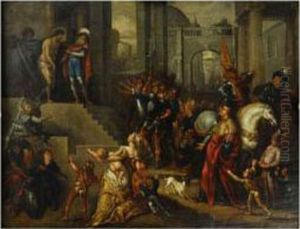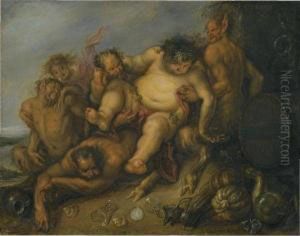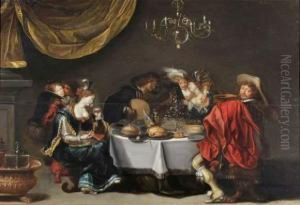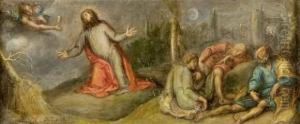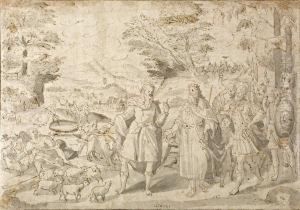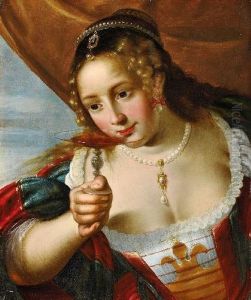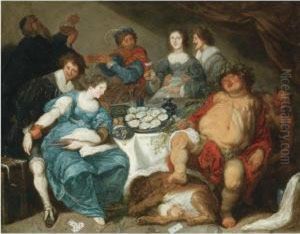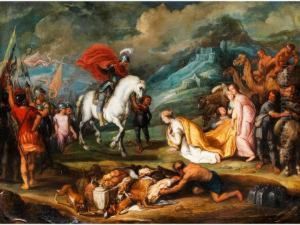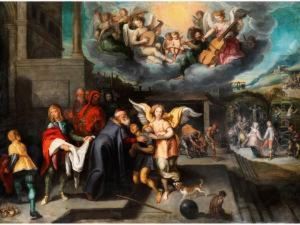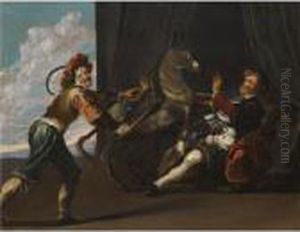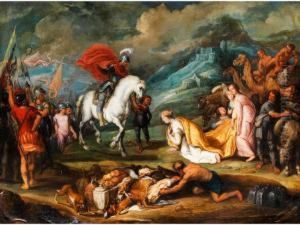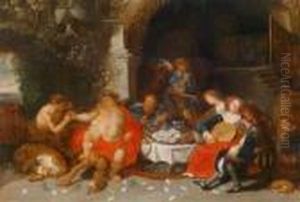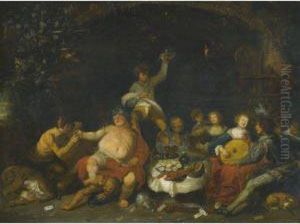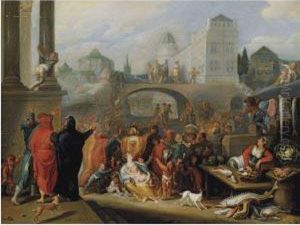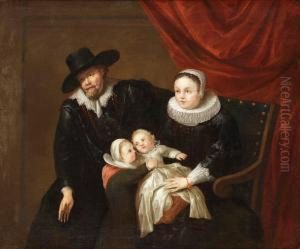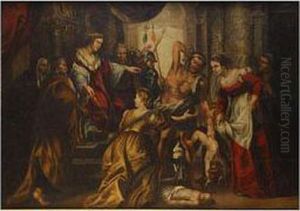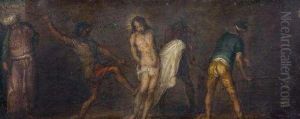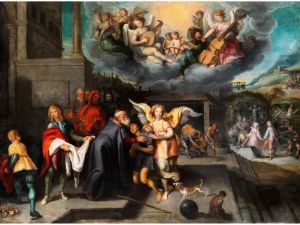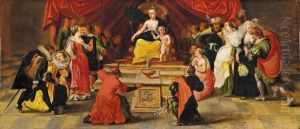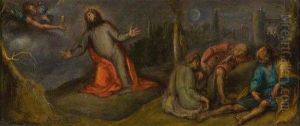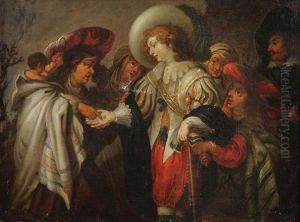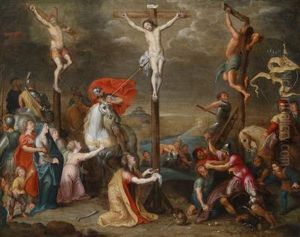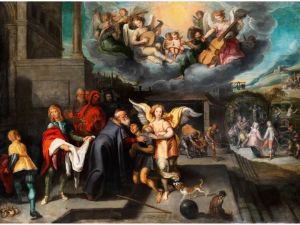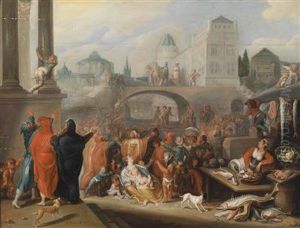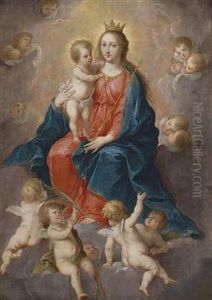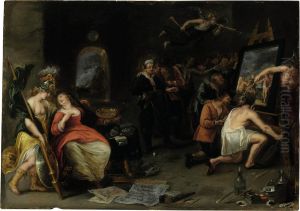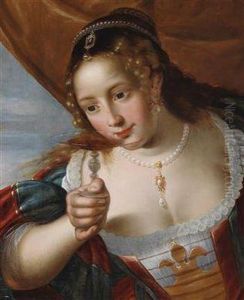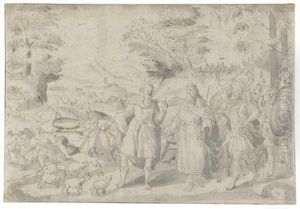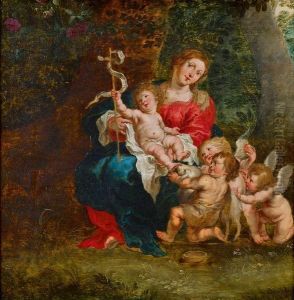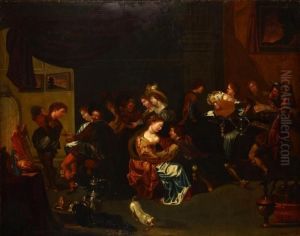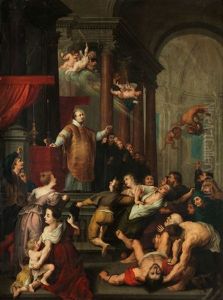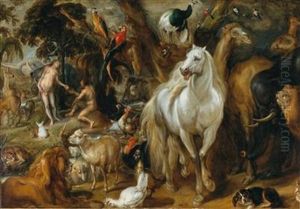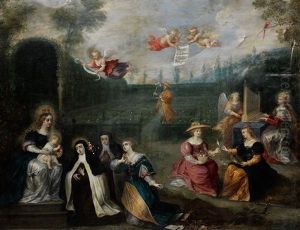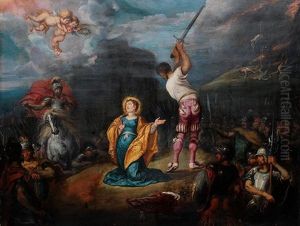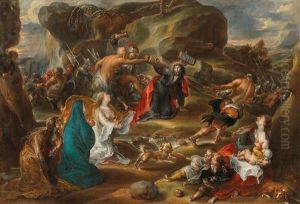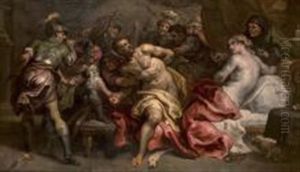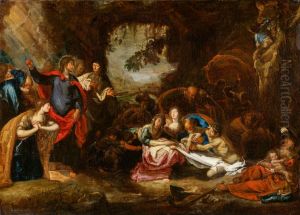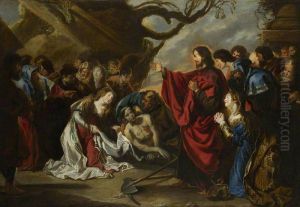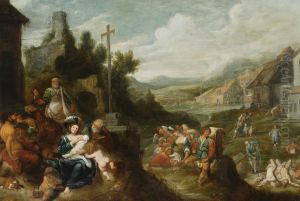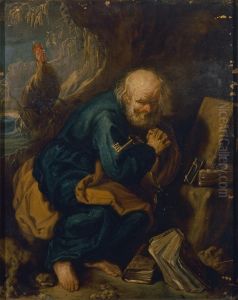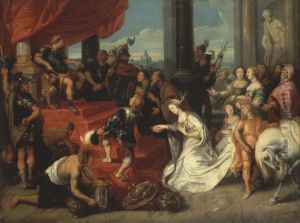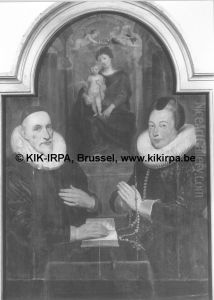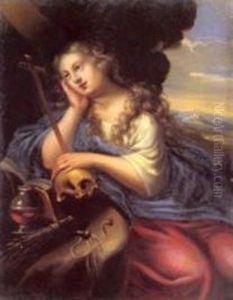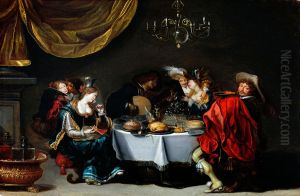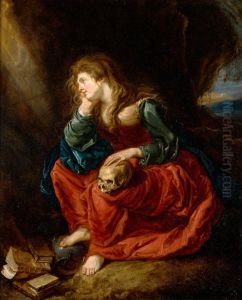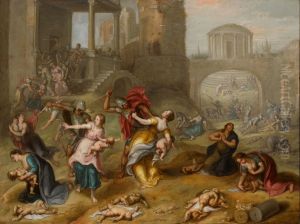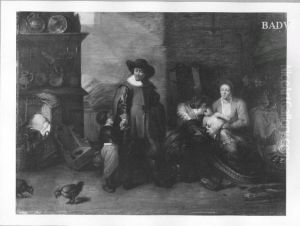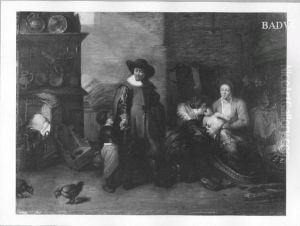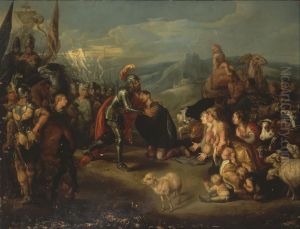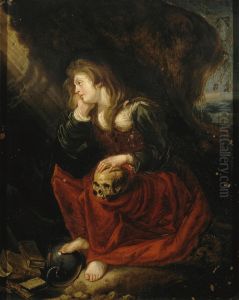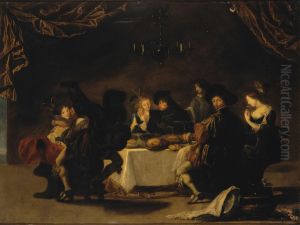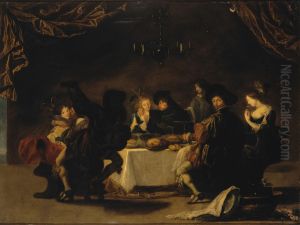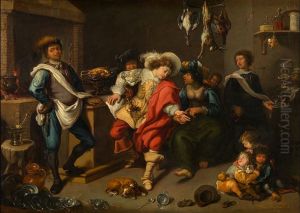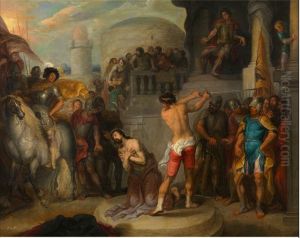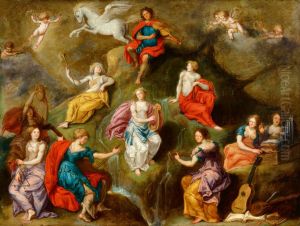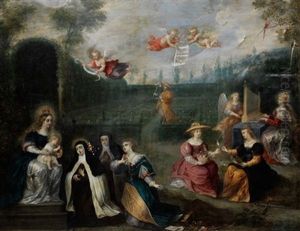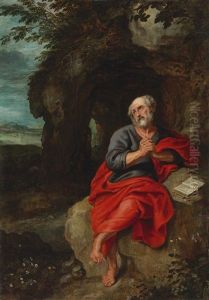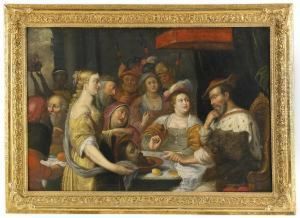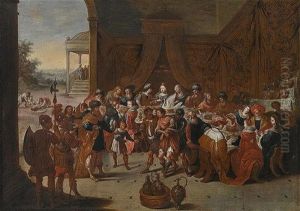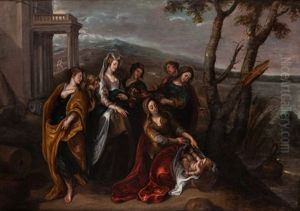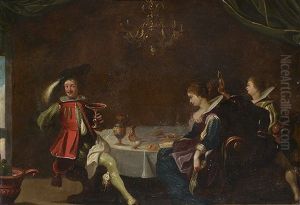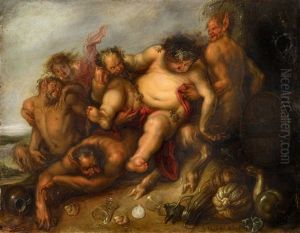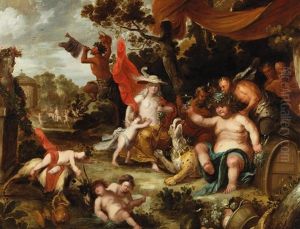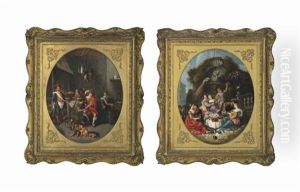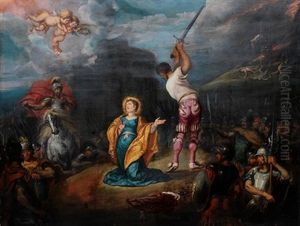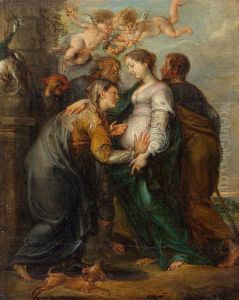Simon de Vos Paintings
Simon de Vos was a Flemish Baroque painter, born on October 28, 1603, in Antwerp, which was then part of the Spanish Netherlands. He was known for his genre scenes, history paintings, and portraits. De Vos became a master in the Antwerp Guild of Saint Luke at the young age of 19 in 1620, which was an impressive achievement and indicative of his artistic talents.
De Vos was initially influenced by the work of older contemporaries in Antwerp such as Abraham Janssens and Jacob Jordaens, and his early works show a strong affinity with the style of Caravaggio, whose tenebristic style was highly influential in Northern Europe at the time. Simon de Vos was particularly adept at incorporating dramatic lighting and rich, vivid colors into his compositions, which added a sense of drama and emotional intensity to his work.
In the 1630s, Simon de Vos's style underwent a significant transformation. He started to adopt a more colourful and elegant style, which was closer to that of his fellow Antwerp artist Anthony van Dyck, and was also influenced by the rising popularity of Flemish painters such as Peter Paul Rubens. This period marks his transition from the Caravaggesque style to a more classical and Baroque approach, characterized by dynamic compositions, elegant figures, and an increased attention to detail and ornamentation in his works.
Throughout his career, de Vos received numerous commissions for altarpieces from churches in Antwerp and its surrounding areas, which allowed him to demonstrate his skill in depicting religious subjects. Additionally, he painted allegorical scenes and was particularly noted for his work on small cabinet pictures, which were popular among collectors of the period.
Simon de Vos was also a teacher, and his workshop trained several notable artists, contributing to the continuation of the Flemish Baroque tradition. He was married to Catharina van Utrecht and was a respected member of the artistic community in Antwerp.
De Vos's work was well-regarded during his lifetime, and he enjoyed a successful career. However, after his death on October 15, 1676, his fame waned, and he was somewhat overshadowed by the more prominent figures of the Antwerp school, such as Rubens and van Dyck. In recent years, art historians have shown a renewed interest in de Vos's work, and his paintings are now appreciated for their contribution to the Baroque movement in Flemish art.
